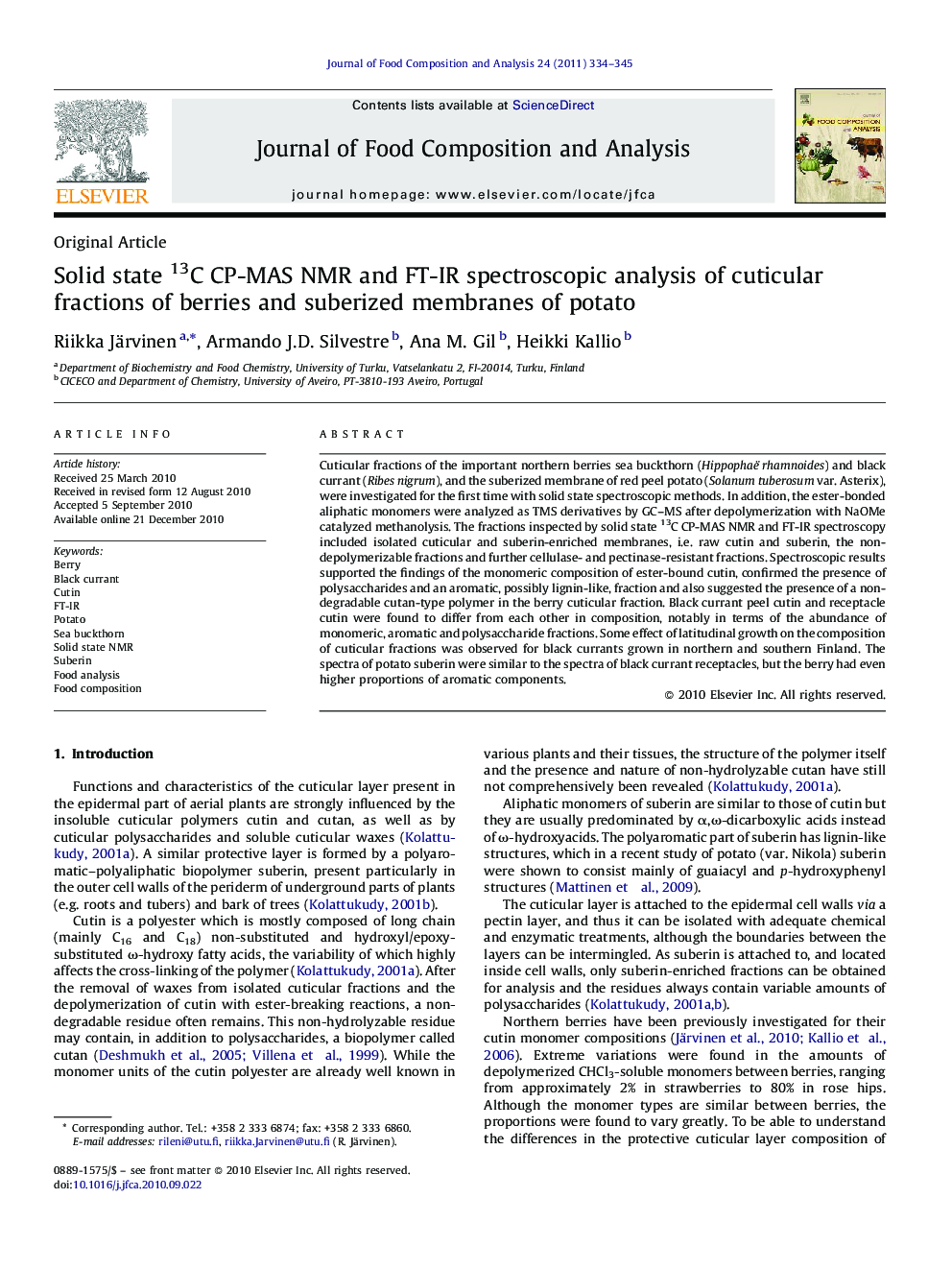| Article ID | Journal | Published Year | Pages | File Type |
|---|---|---|---|---|
| 1218660 | Journal of Food Composition and Analysis | 2011 | 12 Pages |
Cuticular fractions of the important northern berries sea buckthorn (Hippophaë rhamnoides) and black currant (Ribes nigrum), and the suberized membrane of red peel potato (Solanum tuberosum var. Asterix), were investigated for the first time with solid state spectroscopic methods. In addition, the ester-bonded aliphatic monomers were analyzed as TMS derivatives by GC–MS after depolymerization with NaOMe catalyzed methanolysis. The fractions inspected by solid state 13C CP-MAS NMR and FT-IR spectroscopy included isolated cuticular and suberin-enriched membranes, i.e. raw cutin and suberin, the non-depolymerizable fractions and further cellulase- and pectinase-resistant fractions. Spectroscopic results supported the findings of the monomeric composition of ester-bound cutin, confirmed the presence of polysaccharides and an aromatic, possibly lignin-like, fraction and also suggested the presence of a non-degradable cutan-type polymer in the berry cuticular fraction. Black currant peel cutin and receptacle cutin were found to differ from each other in composition, notably in terms of the abundance of monomeric, aromatic and polysaccharide fractions. Some effect of latitudinal growth on the composition of cuticular fractions was observed for black currants grown in northern and southern Finland. The spectra of potato suberin were similar to the spectra of black currant receptacles, but the berry had even higher proportions of aromatic components.
